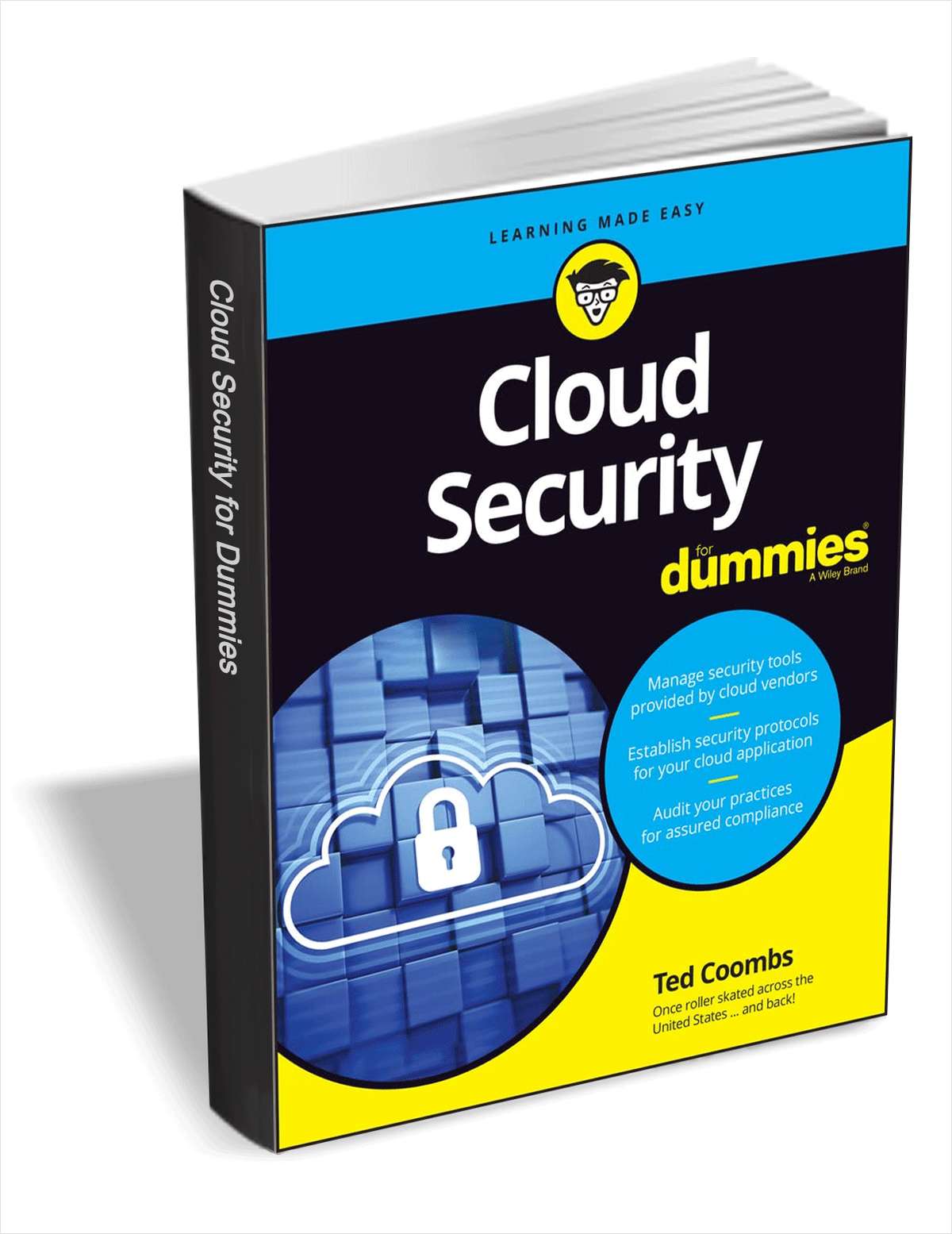
CISA releases open source Untitled Goose Tool to detect malicious activity in Azure, Azure Active Directory and Microsoft 365 environments
The CISA has launched a new security tool designed to help protect various Microsoft cloud services. The open source Untitled Goose Tool is available for both Windows and macOS.
The utility was developed by the US Cybersecurity & Infrastructure Security Agency in conjunction with Sandia National Laboratories. The aim of the tool is to help to detect and respond to malicious activity in Microsoft Azure, Azure Active Directory (AAD) and Microsoft 365 (M365) environments.

New solution helps enterprises manage cloud assets
As organizations turn increasingly to the cloud they face the challenge of understanding not just the cost but also the value of their operation.
To help organizations maximize business value from their technology investments, Flexera is launching a new solution that strengthens an enterprise's FinOps and cloud central teams, while allowing the convergence of IT asset management (ITAM) and FinOps.

IT in 2023: Security, cloud and more
Given the ever-changing trends in cloud computing, security, and more, it can be difficult to plan for the road ahead. However, anticipating new developments, both within your organization and the wider industry, is vital if you want to stay prepared and maximize ROI.
Data is one of a business’ greatest assets, and its role, size and value is only going to increase in 2023 and beyond. Cybersecurity Ventures suggests total global data storage is expected to exceed 200 zettabytes by 2025, with a ransomware attack precited to impact a business, consumer or device every two seconds by 2031, properly securing your data is paramount.

New solution helps to visualize cloud-native app risks
With more and more organizations turning to the cloud and cloud-native application development, AppSec teams face a mounting challenge to keep pace with their development counterparts.
To address this, Backslash Security is launching a new solution to provide unified code and cloud-native security by correlating cloud context to code risk, backed by automated threat modeling, code risk prioritization, and simplified remediation across applications and teams.

How IBM and AWS are driving innovation in the cloud [Q&A]
As we reported at the end of last year, IBM and AWS have extended their collaboration, making IBM software products available as Software-as-a-Service (SaaS) on the AWS Marketplace.
We spoke to Judah Bernstein, CTO, AWS strategic partnership at IBM, to find out more about how the collaboration works and what it means for customers and Ecosystem partners.

Harnessing the power of data in a hybrid cloud environment
In an increasingly crowded business environment, businesses need to stay at the forefront of innovation to get ahead. And the best way for companies to do that is by looking inward -- specifically at their own, preexisting data. Data is every business’ most valuable asset, holding insights that can unlock undiscovered potential. Whether you’re building out fraud detection or working to gain a competitive advantage with new market opportunities, the artificial intelligence (AI) and machine learning (ML) training engines that drive this kind of innovation are only as effective as the data they are given.
Where challenges arise in this process is with the management of data flows. In the past, data has been kept primarily on highly secure, on-premise systems. But more businesses have since been migrating operations to cloud systems, with many opting for a hybrid approach. Research firm Forrester reported that more than 94 percent of U.S. enterprise decision-makers are using at least one type of cloud deployment, with the majority being hybrid or multi-cloud. By modernizing mainframe systems and implementing the right data intelligence tools enterprise leaders can take advantage of all their company data without exposing it to undue threats along the way.

How software pricing strategy is evolving [Q&A]
Buying software used to be relatively simple. You either paid a one-off fee, or an ongoing license, or sometimes a combination of both.
With the advent of cloud and SaaS, however, things have become rather more complicated. Usage based pricing is more common, plus in a difficult economic climate there's a spotlight on software costs.

Economic uncertainty puts the focus onto cloud costs
This year marks the first time in more than a decade that managing cloud spend has overtaken security as the top challenge facing organizations, according to the latest State of the Cloud report from Flexera.
The report is based on responses of 750 respondents from a survey conducted in late 2022 and finds optimizing existing use of the cloud (cost savings) is the top initiative (reported by 62 percent of all respondents).

Cloud adoption leaves regulated industries open to attack
Switching to the cloud has left organizations in heavily regulated industries like healthcare and financial services with a greater attack surface, according to a new report.
Research published today by Blancco Technology Group, based on responses from 1,800 IT professionals in healthcare and finance, shows 65 percent of respondents say that the switch has also increased the volume of redundant, obsolete or trivial (ROT) data they collect.

Tackling cloud costs and multicloud networking in a bad economy [Q&A]
It's become common for businesses to use more than one cloud, however, service providers have no incentive to offer unified management tools as they want to keep customers for themselves.
This means enterprises end up relying on multiple tools as their cloud footprint expands which is not only inefficient but can be costly. We spoke to Rod Stuhlmuller, VP of solutions marketing at Aviatrix, to find out how organizations can monitor and control their cloud usage and costs at a time when budgets are coming under increased pressure.

Developer interest in AI and deep learning grows
New research from O'Reilly, looking at the most sought-after technology topics consumed by the 2.8 million users on its online learning platform, shows that there's been a 42 percent increase in interest in AI.
Interest in deep learning showed a 23 percent increase. Developers also increasingly searched for content related to transformers -- the AI model that's led to tremendous progress in natural language processing -- reflecting the impact of advancements in Open AI's GPT-3 and ChatGPT and the anticipation for upcoming offerings from Google, Meta, and others.

Half of enterprises have publicly exposed SaaS assets
A new report finds that 50 percent of enterprises and 75 percent of mid-sized organizations have exposed public SaaS assets.
The report from security platform DoControl shows that large and medium companies have an average of 5.5 million and 1.5 million assets stored in SaaS applications respectively, illustrating the challenge IT and SecOps teams face daily in securing the intellectual property those assets contain.

Data protection in the cloud: 3 best practices
The "Global DataSphere" is exploding in size. IDC predicts that by 2026, the amount of data in the world will have doubled again. While most enterprises have digitized their operations, they continue to add more strategic workloads and create more and more data. So, as the amount of data enterprises have to deal with grows exponentially, moving to the cloud based on an elaborated strategy offers significant benefits like scalability, flexibility and cost-effective storage.
But can this go on forever? Gartner expects total worldwide end-user spending on public cloud services will reach a record $592 billion this year, a 21 percent increase from 2022. This rapid level of growth and migration raises some concerns at an enterprise level, with fast "lift and shift" migrations meaning best-practices for modern data protection aren’t followed. The Cloud security alliance (CSA) reported that 96 percent of companies say they have insufficient security for sensitive cloud data -- so across the board we have a long way to go on this journey. Here are three best practices for enterprises to protect their data in the cloud.

Optimizing hybrid cloud application delivery
For digital businesses, success depends on application performance. Organizations must deliver the best possible experiences for employees and customers while driving innovation and ensuring security. To do this, enterprises are increasingly migrating application delivery to hybrid/multi-cloud environments to achieve increased agility and resiliency.
But are businesses achieving these benefits? A10 Networks and Gatepoint Research surveyed senior technology decision-makers around the globe, revealing key insights into their experiences delivering applications in the cloud and their priorities around application delivery controllers (ADC).

Get 'Cloud Security For Dummies' (worth $21) for FREE
Cloud technology has changed the way we approach technology. It’s also given rise to a new set of security challenges caused by bad actors who seek to exploit vulnerabilities in a digital infrastructure. You can put the kibosh on these hackers and their dirty deeds by hardening the walls that protect your data.
Using the practical techniques discussed in Cloud Security For Dummies, you’ll mitigate the risk of a data breach by building security into your network from the bottom-up. Learn how to set your security policies to balance ease-of-use and data protection and work with tools provided by different vendors trusted around the world.
